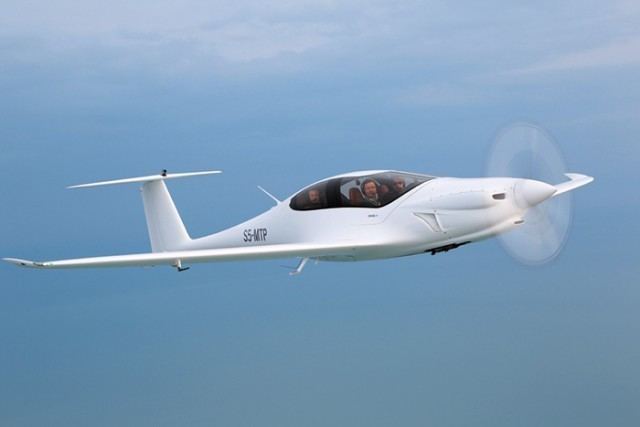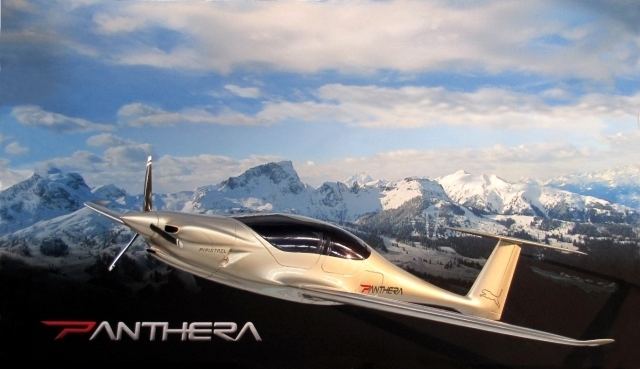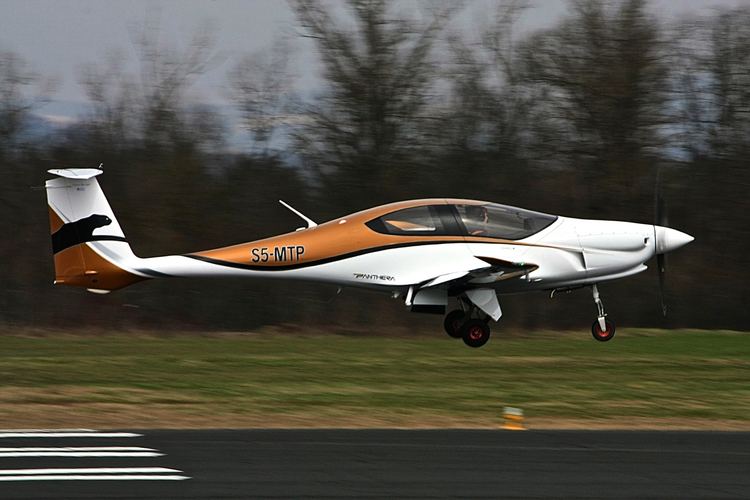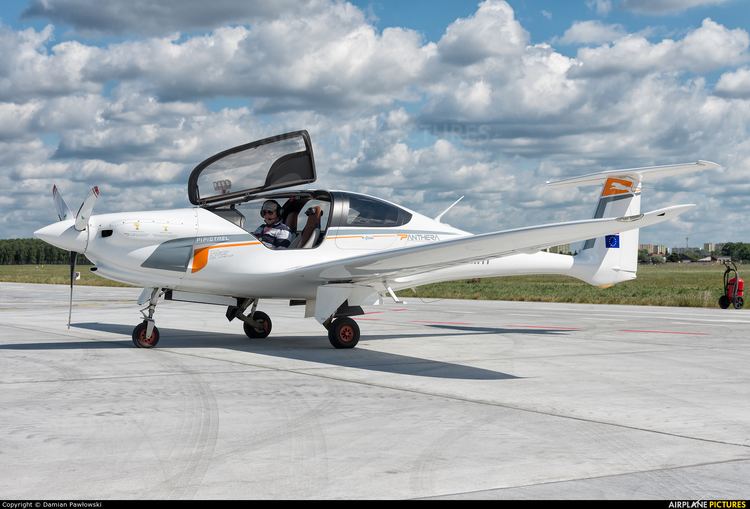Range 1,900 km Cruise speed 374 km/h Engine type Opposed-piston engine Number of seats 4 | Wingspan 11 m Length 8.07 m | |
Pipistrel panthera
The Pipistrel Panthera is a lightweight, all-composite, highly efficient four-place aircraft under development by Pipistrel of Slovenia.
Contents
The gasoline-powered version of the Panthera is intended to cruise at 202 kn (374 km/h) for over 1,000 nmi (1,852 km) with a 10 US gph (37 lph) fuel burn. There are two other versions planned, one with a 145 kW hybrid power system, and the other with a 145 kW pure electric system. These two latter variants will only seat two people to accommodate the electric systems.

The company intends to offer the aircraft first as a kit for amateur construction and may later type certify it.

Pipistrel panthera
Design and development

In May 2011, Pipistrel was working on constructing the prototype, powered by the Lycoming engine, with all of the aircraft molds already completed. The first flight was planned for autumn of the same year, with the aircraft being tested the following summer with the electric technologies derived from the Green Flight Challenge electric Taurus project. It will be initially offered in kit form, and Pipistrel indicated that construction will take place in Italy.

Features of the aircraft will include an airframe parachute designed for use at high speeds and low altitudes and a glass cockpit. The Pipistrel Panthera has an all-composite airframe, made from carbon fiber, glass fiber, and kevlar, and it sports trailing-link electric landing gear made of titanium and aluminum alloys, which will be of benefit for operations from grass runways. The composite materials used for the exterior of the aircraft were selected in part based on their ability to withstand lightning strikes, which merit increased consideration when employing composite materials instead of a traditional aluminum airframe.

In March 2014 it was announced that the intended Lycoming IO-390 powerplant will be replaced by a six-cylinder Lycoming IO-540. The change was made due to Lycoming Engines not planning to certify the IO-390 for automotive fuel as an option. The IO-540 will provide the same cruise performance and fuel economy, but weighs 41 kg (90 lb) more. However, it will allow the Panthera's gross weight to be increased by 95.25 kg (210 lb) to make up for the extra weight. The aircraft will use the existing cowling, which was originally designed to accommodate a six-cylinder engine anyway.
Operational history

A test article was introduced at AERO Friedrichshafen 2012 in April 2012. On March 29, 2013, the Panthera had its first successful engine start, using a 210 hp (157 kW) Lycoming engine, and subsequently began taxi tests in preparation for the "complete flight test programme". The Pipistrel Panthera made its 54-minute maiden flight less than one week later on April 4, starting the evaluations of performance, handling and systems in flight. Less than one month later, the Panthera flew over the Alps to the Aero fair at the Friedrichshafen Airport.
Specifications
Data from manufacturer’s website
General characteristics
Performance
